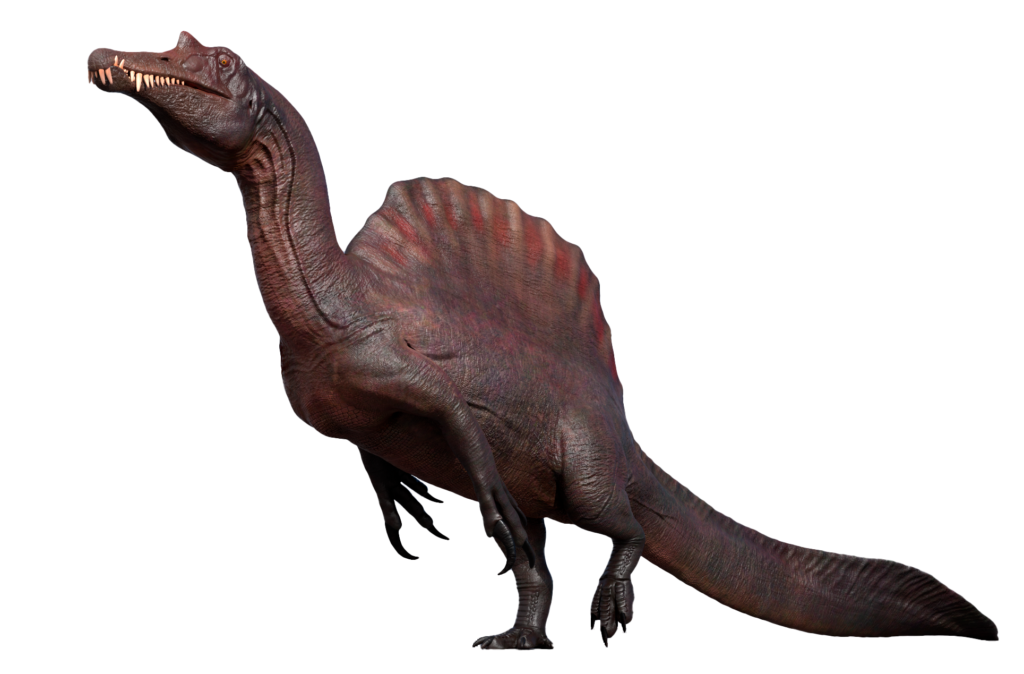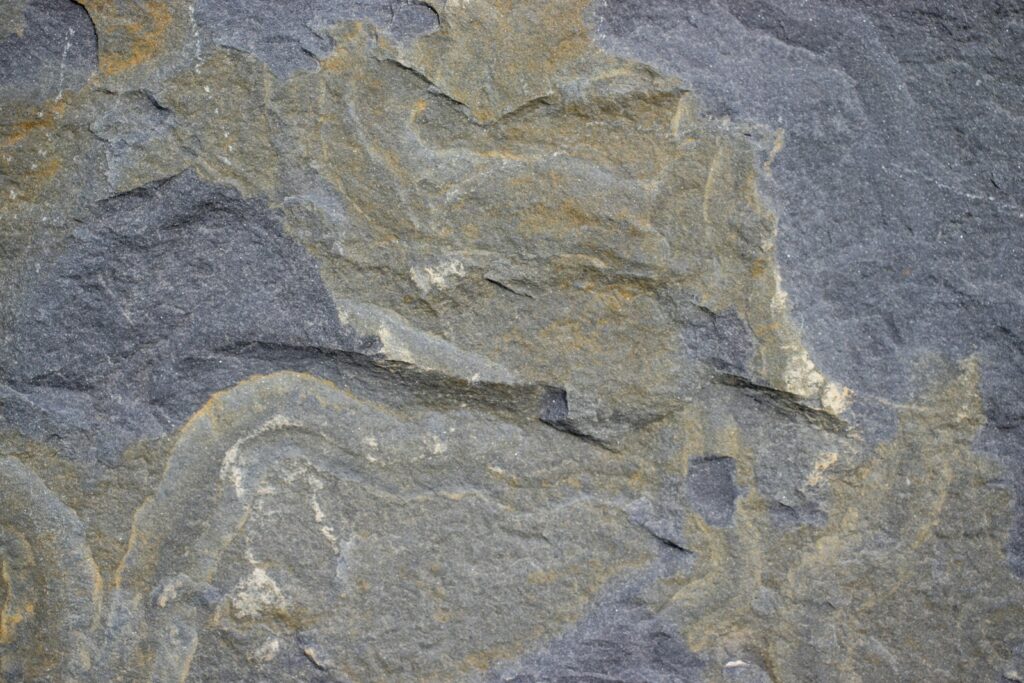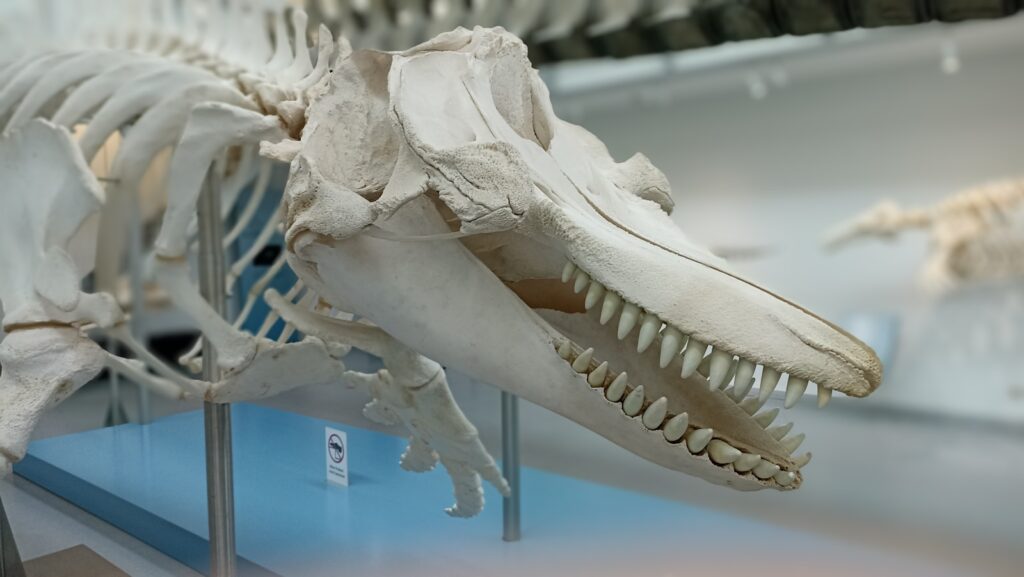Few prehistoric creatures have sparked as much scientific debate and reimagining as Spinosaurus aegyptiacus. This remarkable dinosaur, with its massive sail-like spine and crocodile-like snout, has undergone multiple identity transformations in scientific literature since its discovery. Once thought to be a terrestrial predator like the Tyrannosaurus rex, recent evidence has dramatically shifted our understanding of this enigmatic creature toward a more aquatic lifestyle. This ongoing scientific detective story illustrates how paleontology continuously evolves as new evidence emerges, challenging our perceptions of ancient life.
The Discovery Journey of Spinosaurus

The story of Spinosaurus begins in the early 20th century when German paleontologist Ernst Stromer discovered the first fossils in Egypt’s Western Desert in 1912. These initial remains included parts of the jaw, vertebrae with the distinctive neural spines, and limb bones that hinted at an unusual predator unlike any previously known dinosaur. Unfortunately, Stromer’s original specimens were destroyed during World War II when Allied bombing raids struck the Munich museum housing these invaluable fossils. This devastating loss created a significant gap in scientific knowledge about Spinosaurus, forcing paleontologists to rely on Stromer’s detailed notes and drawings for decades. The rediscovery process only began in earnest during the late 20th and early 21st centuries when new specimens emerged from North African fossil beds, allowing scientists to piece together a more complete picture of this mysterious dinosaur.
Anatomical Peculiarities That Puzzle Scientists

Spinosaurus possesses one of the most distinctive anatomical profiles among dinosaurs, featuring several adaptations that have confounded paleontologists. Most prominently, the neural spines extending from its vertebrae create a massive sail-like structure that may have reached over 5 feet tall. Unlike the relatively balanced body structure of most large theropods, Spinosaurus had unusually dense bones, particularly in its limbs and torso—a feature common in aquatic animals that need help with buoyancy control. Its skull presents another peculiarity, with an elongated, crocodile-like snout filled with conical teeth perfect for catching slippery prey rather than the serrated blades found in land-hunting theropods. Perhaps most puzzling is its pelvis and hindlimb structure, which appears much less robust than would be expected in a bipedal land predator of its size. These anatomical oddities collectively point to an animal that evolved for a lifestyle fundamentally different from other large theropod dinosaurs of its era.
The Changing Face of Spinosaurus Reconstructions

Few dinosaurs have undergone as many dramatic makeovers as Spinosaurus throughout paleontological history. Stromer’s initial reconstruction in the early 20th century depicted a fairly conventional theropod that walked upright on two legs with a dramatic sail on its back. By the late 20th century, influenced by films like Jurassic Park III, Spinosaurus was portrayed as a bipedal super-predator that could challenge and defeat even Tyrannosaurus rex in combat. This vision began to change dramatically in 2014 when paleontologist Nizar Ibrahim and colleagues published research suggesting Spinosaurus had shorter hind limbs than previously thought, possibly indicating a quadrupedal stance or semi-aquatic lifestyle. The most revolutionary reconstruction came in 2020 when further discoveries revealed its paddle-like tail—a feature never before seen in dinosaurs but common in aquatic reptiles. Each new fossil discovery has necessitated a reimagining of this dinosaur, transforming it from a terrestrial apex predator to what many scientists now consider the first known swimming dinosaur.
The Revolutionary 2014 Fossil Discovery

The paleontological world experienced a seismic shift in Spinosaurus research when Nizar Ibrahim’s team announced their groundbreaking discoveries in 2014. The team had uncovered partial remains of a single Spinosaurus individual in Morocco’s Kem Kem beds, providing the first substantial new material since Stromer’s original specimens were destroyed. This fossil treasure included portions of the skull, vertebrae, pelvis, and, critically, limb bones that challenged existing notions about the dinosaur’s locomotion. What made this discovery particularly revolutionary was evidence suggesting much shorter hindlimbs than previously reconstructed, proportionally smaller than any other known large theropod dinosaur. The relatively short hindlimbs, combined with other anatomical features like dense bones and a center of gravity shifted forward, strongly suggested an animal not well-adapted for running on land. This discovery sparked intense debate in paleontological circles, with some scientists embracing the aquatic hypothesis while others remained skeptical, demanding more evidence before accepting such a radical departure from traditional theropod body plans.
The Game-Changing Tail Revelation of 2020

If the 2014 discoveries raised eyebrows in the paleontological community, the 2020 findings about Spinosaurus’s tail structure completely transformed our understanding of this dinosaur. Ibrahim and colleagues revealed evidence of a large, flexible, fin-like tail unlike anything previously known in dinosaurs. The tail vertebrae had remarkably elongated neural spines, creating a paddle-shaped appendage that would have been perfect for propulsion through water. Biomechanical studies indicated this tail could generate significant thrust when moved side-to-side, similar to how crocodiles and some fish swim. This adaptation represented compelling evidence for an aquatic lifestyle, as such a specialized tail structure would serve little purpose for a land-dwelling animal. Computer modeling suggested this tail design would have made Spinosaurus an efficient swimmer, capable of pursuing prey through water with considerable speed and agility. The discovery of this paddle-like tail structure represented a watershed moment in dinosaur paleontology, providing the strongest evidence yet that at least one dinosaur lineage had returned to a fully aquatic lifestyle.
Habitat and Environment: Where Spinosaurus Ruled

The paleoenvironment of Spinosaurus provides crucial context for understanding its adaptations and lifestyle. During the mid-Cretaceous period, approximately 97 million years ago, North Africa was dramatically different from today’s arid Sahara. The region featured vast river systems, extensive wetlands, and coastal mangrove forests teeming with aquatic life. These waterways were inhabited by massive prehistoric fish, including the car-sized Onchopristis with its fearsome rostral spines, along with lungfish, coelacanths, and various sharks. Fossil evidence shows that Spinosaurus remains are consistently found in sediments associated with aquatic environments, rarely appearing in deposits representing drier habitats. The abundance of fish fossils found alongside Spinosaurus specimens suggests these creatures shared the same ecosystem, with the latter likely preying upon the former. This environmental context provides strong circumstantial evidence supporting an aquatic lifestyle for Spinosaurus, as it appears to have been specifically adapted to exploit the rich aquatic resources of these Cretaceous wetlands rather than competing with other large theropods in terrestrial habitats.
Dental Evidence: Teeth Tell a Watery Tale

The dentition of Spinosaurus provides compelling evidence for its feeding ecology and lifestyle. Unlike the blade-like, serrated teeth of terrestrial predators like Tyrannosaurus or Allosaurus, which excel at slicing through flesh and tendons, Spinosaurus possessed conical teeth with fine striations rather than sawing edges. This dental configuration closely resembles that of modern crocodilians and other fish-eating specialists, designed for grasping rather than tearing. Micro-wear patterns on recovered Spinosaurus teeth reveal scratches consistent with feeding on slippery, scale-covered prey rather than the gouges typically found on teeth used to dismember large terrestrial animals. Isotopic analysis of Spinosaurus teeth has revealed chemical signatures suggesting a diet rich in aquatic prey, with carbon and oxygen isotope ratios consistent with animals that spend significant time in water. Additionally, the front teeth of Spinosaurus form an interlocking trap when the jaws close, creating an effective basket for catching fish—another specialization that would be superfluous for a land-based hunter but invaluable for an aquatic predator.
Sensory Adaptations for Aquatic Hunting

Spinosaurus possessed specialized sensory adaptations that appear perfectly suited for hunting in aquatic environments. CT scans of partial Spinosaurus skulls have revealed an extensive network of neurovascular canals in the snout, similar to those found in crocodilians and other semi-aquatic predators. These structures likely housed pressure-sensitive organs capable of detecting the movement of prey underwater, even in murky conditions where vision would be limited. The nostrils of Spinosaurus were positioned higher on the skull than in typical theropods, allowing the animal to breathe while partially submerged—a common adaptation in semi-aquatic vertebrates. Studies of the brain endocast (the impression of the brain in the skull) suggest enlarged olfactory bulbs, potentially providing an enhanced sense of smell that would help locate prey in water. The eyes were positioned relatively high and toward the top of the skull, another common feature in animals that hunt at the water’s surface, allowing Spinosaurus to observe its surroundings while remaining mostly submerged and hidden from potential prey.
The Controversial Sail: Multiple Competing Theories

The most visually striking feature of Spinosaurus—its sail—continues to generate extensive scientific debate regarding its primary function. The thermoregulatory hypothesis suggests the sail served as a radiator to disperse excess heat when exposed to air or absorb warmth when aligned with the sun, potentially allowing better temperature control for an animal moving between water and land. An alternative explanation proposes that the sail primarily served a display function, either for species recognition or sexual selection, with larger or more colorful sails potentially attracting mates. Some researchers have suggested a more direct aquatic function, with the sail possibly serving as a stabilizing keel while swimming or even as a form of solar panel, capturing energy while the dinosaur basked partially submerged. The most recent theories consider biomechanical aspects, questioning whether the sail might have been covered with more muscle and fat than traditionally depicted, forming a bison-like hump that stored energy for sustained swimming rather than a thin membrane stretched between the neural spines. The actual function likely combined several of these purposes, adapting over evolutionary time as Spinosaurus became increasingly specialized for its unique ecological niche.
Locomotion Debate: Swimming Versus Walking

How Spinosaurus moved both on land and in water remains one of the most contentious aspects of its paleobiology. The 2020 tail discovery strongly supports efficient swimming capabilities, with computer models suggesting the tail could generate substantial thrust through lateral undulation. However, debate continues regarding its terrestrial locomotion capabilities. Some paleontologists argue Spinosaurus would have been awkward and slow on land, possibly moving quadrupedally like a crocodile, given its forward-shifted center of mass and relatively short hindlimbs. Other researchers contend it maintained bipedal locomotion like other theropods, just with reduced efficiency. Studies of bone density have revealed Spinosaurus had pachyostotic (unusually dense) bones similar to those of penguin-like diving birds and early whales, suggesting it might have been negatively buoyant—an adaptation that would help with diving but potentially make terrestrial movement more cumbersome. The most recent consensus suggests Spinosaurus was likely capable of both swimming and walking, but with a strong specialization toward aquatic locomotion, representing a transitional form between fully terrestrial ancestors and a more aquatic lifestyle—similar to the evolutionary trajectory seen in early cetaceans before they became fully aquatic.
The Ecological Niche of Spinosaurus

Spinosaurus appears to have occupied a specialized ecological niche unlike any other known dinosaur, functioning as an apex predator in freshwater and coastal environments. This unique position likely minimized direct competition with the other large theropods that shared its ecosystem, such as Carcharodontosaurus and Deltadromeus, which maintained more traditional terrestrial hunting strategies. Evidence from stomach contents and closely associated fossils suggests Spinosaurus primarily consumed large fish, including the sawfish-like Onchopristis and lungfish, though it likely opportunistically took other prey, including smaller dinosaurs and pterosaurs, when available. Modern ecological analogues might include crocodilians and grizzly bears that specialize in salmon fishing, though Spinosaurus appears to have been more aquatically adapted than either. This separation of hunting grounds between terrestrial and aquatic environments would have allowed multiple large predator species to coexist in the rich Cretaceous ecosystems of North Africa without excessive competitive pressure. Spinosaurus thus exemplifies niche specialization as an evolutionary strategy, demonstrating how adaptation to underutilized resources can create opportunities even in ecosystems already populated by formidable predators.
Ongoing Scientific Controversies and Future Research

Despite recent discoveries, significant scientific disagreement persists regarding the lifestyle and capabilities of Spinosaurus. Some paleontologists remain skeptical about its degree of aquatic adaptation, arguing that the evidence supports a shore-dwelling wader similar to herons rather than an active swimmer. Critics of the fully aquatic hypothesis point to the limited fossil record, noting that conclusions about locomotion based on incomplete skeletal material may be premature. Future research directions include searching for more complete Spinosaurus specimens, particularly those preserving the forelimbs and shoulder girdle, which remain poorly understood. Biomechanical studies using advanced computer modeling continue to test hypotheses about swimming and walking capabilities. Additionally, the histological examination of bone microstructure promises insights into growth patterns and physiology that may clarify its lifestyle. Perhaps most exciting is the possibility of finding fossil skin impressions or stomach contents that could provide direct evidence of its habitat preferences and diet. As techniques like isotope analysis become more sophisticated, researchers hope to track seasonal movements and habitat use, potentially revealing whether Spinosaurus migrated between freshwater and marine environments like some modern predators.
Spinosaurus in Popular Culture: Fact Versus Fiction

Spinosaurus has captured the public imagination since its dramatic appearance in Jurassic Park III, where it was portrayed as a super-predator capable of defeating the Tyrannosaurus rex. This depiction, while cinematically impressive, reflected the scientific understanding of the early 2000s, showing a bipedal land predator with a sail rather than the more aquatic creature suggested by recent evidence. Subsequent documentaries and museum exhibits have struggled to keep pace with rapidly evolving scientific interpretations, often presenting outdated reconstructions that fail to incorporate the latest discoveries. Educational materials frequently lag behind current research, with many children’s books still depicting Spinosaurus as essentially a sail-backed Tyrannosaurus. The ever-changing scientific understanding of Spinosaurus provides an excellent case study in how paleontology works—continuously revising hypotheses as new evidence emerges rather than settling on fixed answers. For educators and content creators, Spinosaurus offers a valuable opportunity to discuss the nature of science itself, demonstrating how scientific understanding evolves and how discoveries can completely transform our perception of creatures that vanished millions of years ago.
Conclusion

The story of Spinosaurus represents one of paleontology’s most dramatic scientific reversals, transforming our understanding of this dinosaur from a conventional terrestrial predator to what appears to be the first definitively aquatic dinosaur ever discovered. With its paddle-like tail, pressure-sensitive snout, conical teeth, and dense bones, Spinosaurus displays an array of specializations that collectively point to a creature supremely adapted for hunting in water. Yet this scientific journey remains incomplete, with ongoing debates about the extent of its aquatic lifestyle and terrestrial capabilities. As researchers continue unearthing new fossils and applying cutting-edge analytical techniques, our understanding of this remarkable dinosaur will undoubtedly continue to evolve. Spinosaurus stands as a powerful reminder that even in extinction, some dinosaurs retain their ability to surprise us, challenging our assumptions about the past and expanding our understanding of evolutionary possibilities.




